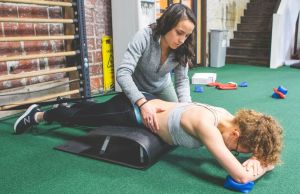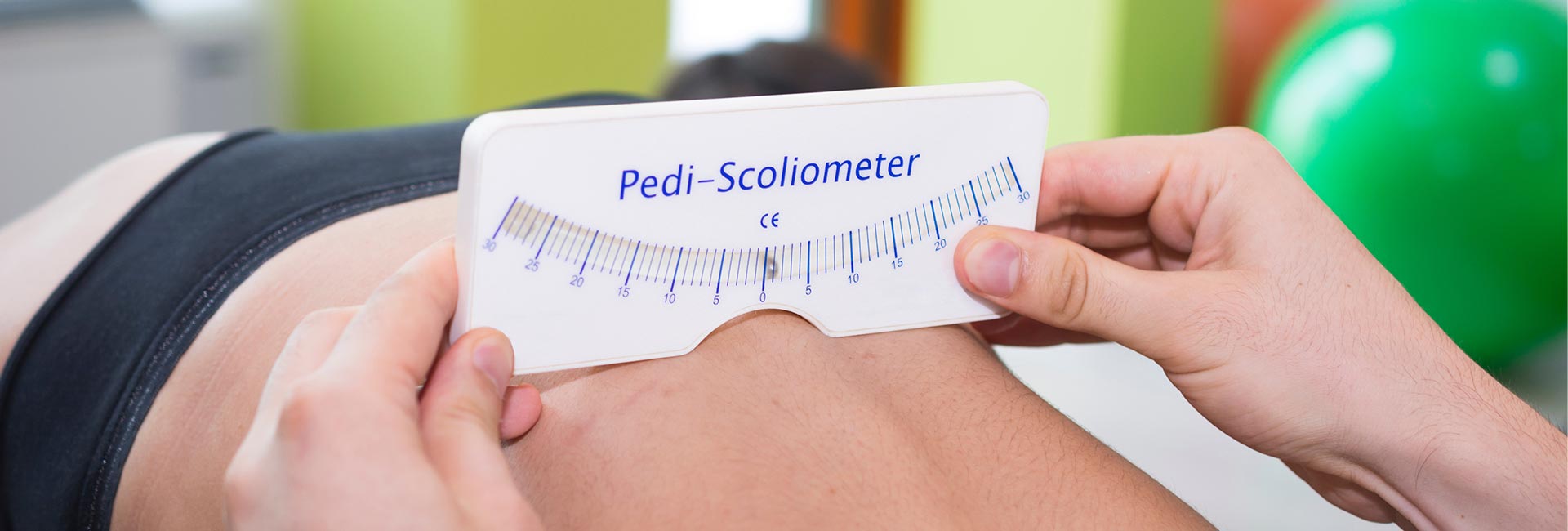The critical information about adolescent scoliosis.
In 4th grade, I specifically remember being called into the school nurse’s office to run through a quick test where I bent forward, and she checked my back. Most in my class passed through the line quickly, however, a few students received slips of paper to follow up with a pediatrician for further evaluation. Fast forward a couple of decades and I now recognize this as the Adam’s Forward Bent Test, the most common way to recognize adolescent scoliosis.
As I am now certified in the treatment of scoliosis, I think it is important to share the most important things to know about scoliosis so that adolescents (and their parents) can make the best decisions possible. In this blog, I will break down the different tests and treatments that are commonly performed and provide a synopsis of each to help clarify this condition and the different treatments available.
How do you test for adolescent scoliosis?
Adam’s Forward Bend Test:
In this test, the child can be standing or sitting on a level surface and then will be asked to bend forward to touch their toes. This test can indicate possible scoliosis when a prominence on one side of the spine is seen.
X-ray:
When an Adam’s test shows a prominence on one side of the spine, typically a pediatrician will send the patient for an X-ray. An X-ray will show the amount of curvature of the spine, which can be specifically measured to calculate the Cobb Angle. The Cobb Angle is the degree of curve and is how the severity of scoliosis is typically measured. Many times, a child’s growth plate will also be assessed to determine how far into skeletal maturity they are as this will later influence the course of treatment significantly. X-rays looking at the side of the spine are also obtained to determine abnormalities in this other plane of motion.
What happens after a diagnosis of adolescent scoliosis?
After x-rays are obtained and the degree of spinal curvature is established, the course of treatment is determined.
 Severe curves (typically 50 degrees or greater) often lead to the patient being sent for correction surgery. Curves that are minor in nature (typically less than 20 degrees) are most often told to wait, as many of these more minor curves spontaneously resolve. Curve measurements that fall between 20-50 degrees are typically managed conservatively through physical therapy and/or bracing. These curvature degrees are all subject to the extent of the patient’s spinal maturity as once the spine stops growing the risk of curves worsening significantly decreases.
Severe curves (typically 50 degrees or greater) often lead to the patient being sent for correction surgery. Curves that are minor in nature (typically less than 20 degrees) are most often told to wait, as many of these more minor curves spontaneously resolve. Curve measurements that fall between 20-50 degrees are typically managed conservatively through physical therapy and/or bracing. These curvature degrees are all subject to the extent of the patient’s spinal maturity as once the spine stops growing the risk of curves worsening significantly decreases.
How is adolescent scoliosis treated and what are the outcomes?
Physical therapy for scoliosis:

PT for scoliosis utilizes the X-rays obtained, as well as a detailed physical examination, to classify the spinal curve into a specific group that will respond best to treatment. This differs based on where the curves are located and the total number of spinal curves. The goal is to teach the patient how to correct each curve through lengthening the spine, specific movements, and breathing to stretch the curves closer to a straightened spine. The highest level of research supports physical therapy and shows that this is highly successful in reducing the degree of curvature and preventing more invasive interventions such as surgery.
Bracing for scoliosis:

Like physical therapy, bracing is successful in preventing curve progression. There are different types of braces – some aim to keep the spine in its current curve degree while others aim to correct curvature. Bracing is typically issued for curves from 30-50 degrees or those at high risk of progression. Bracing is successful when adherence is high, ideally when worn for the majority of the day and night.
Surgery for scoliosis:
As a final option, surgery can be utilized to correct the spine curvature. Traditionally this has been accomplished through spinal fusion, in which vertebrae are aligned and set in place. Other procedures include osteotomy (removal of bone), thoracoplasty (removal of ribs), hemi vertebral excision (removing part of vertebra), vertebral body tethering (placing a tether via screws along the vertebra to straighten the spine), and Apifix (fusing the top and bottom parts of the spine with an internal brace between). Surgery is typically successful in reducing curves, however, carries typical surgical risks such as infection, high pain levels, and potential need for further surgery in the future.
Unfortunately, screening for scoliosis in the school system does not currently take place so having an eye as a parent or guardian is very helpful, as is advising children themselves to be aware of the potential for scoliosis. Pediatricians are excellent at screening for scoliosis so bringing up any concerns to your providers is helpful. As physical therapists, we also provide free screenings for scoliosis and can provide detailed recommendations.

